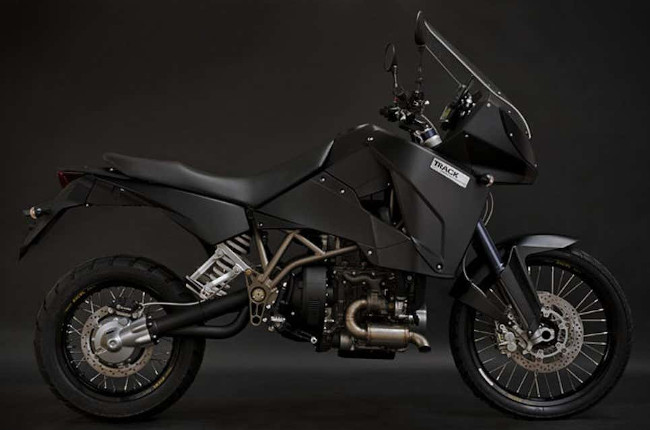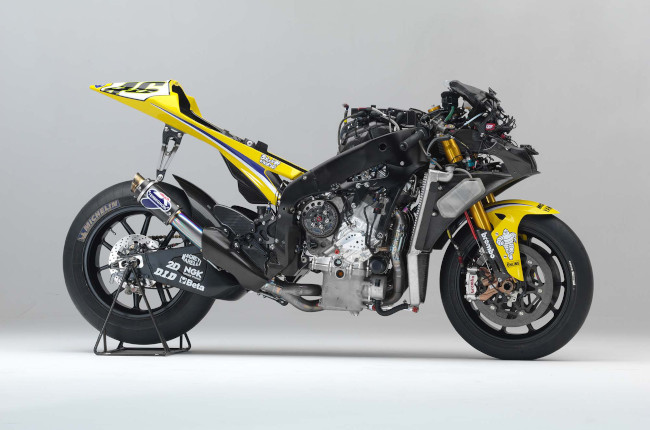Why are diesel-powered motorcycles so rare?
Let’s take a closer look as to why there are hardly any diesel motorcycles in the market.

With all the hype surrounding the electrification of vehicles all over the world, it can be all too easy not to notice the fact that the motorcycle industry seems to have skipped a phase integral to the automotive industry. At present, lots of popular family size SUVs, sedans, and minivans are powered by diesel engines. Loved for their fuel efficiency, low-end power, and ease of maintenance, diesel engines just make sense—but not for motorcycles.
While there have been diesel powered motorcycles in the past, none of them really ever took off. Now as it would turn out, motorcycles are very different from cars not just due to the fact that they only have two wheels, but also the very nature in which they operate. Having said all that, let’s take a closer look as to why there are hardly any diesel powered motorcycles in the world.
Motorcycles need to rev higher

Motorcycles, particularly those of a sportier nature, are often equipped with high-revving motors which make most of their power high up in the rev range. Even sports cars and other performance-oriented four-wheelers tend to prefer gas engines precisely due to this fact. With the most production diesel engine topping out at around 5,000 to 6,000 rpm, this just won’t cut it for a motorcycle engine.
Furthermore, a lumpy, low-revving motor can be very unstable and produce a lot of vibrations. While this isn’t as big of an issue with cars, thanks to the fact that they have four wheels, and can make use of sophisticated engine mounting systems, motorcycles need to work with as little space as possible.
Gasoline engines are usually sharper and more linear

This brings us to our next point. Gasoline engines are simply sharper and more linear, thanks to the fact that their ignition is provided via a spark plug. Diesel engines, on the other hand, make use of something known as compression ignition. This results in erratic, sometimes unpredictable ignition, which ultimately results in rough power delivery. This will further be heightened by the fact that motorcycles are so much lighter than cars, and are much more easily affected by sudden pulses in power output.
Another important point to note is that motorcycles need to be peppy, and accelerate off the line at a considerably fast pace. This doesn’t exactly favor the diesel engine—especially if it lacks a turbocharger. This could then result in a very slow, tractor-like motorcycle that is simply too boring to ride. Now, there was once a diesel-powered motorcycle in the form of the Royal Enfield Taurus in India. It was basically a Bullet 350 swapped out with a small capacity diesel motor. Needless to say, it was an extremely sluggish motorcycle with a power output of just 6.5 horsepower and a top speed of just 65 kilometers per hour.
Diesel engines tend to be heavy

This brings us to our last point. These days, motorcycle manufacturers have been working hard at reducing the weight of their machines. Now, this doesn’t exactly go in the favor of the good old diesel engine. As mentioned earlier, Diesel engines rely on compression ignition, as opposed to a spark plug. This means that engine manufacturers must engineer the motors to withstand much higher compression ratios than that of a conventional gasoline motor. This ultimately results in sticker cylinder walls, beefier connecting rods and pistons, as well as engine internals made from harder-wearing materials, ultimately resulting in heavier weight.
At the end of the day, motorcycle manufacturers realize that riding a motorcycle is largely enjoyable thanks to a linear, predictable, and exhilarating power band. This kind of power output is best produced by a gasoline engine, which operates more efficiently at higher RPMs and ultimately can be constructed out of lighter weight materials. With the electrification of motorcycles just around the corner, chances are that manufacturers aren’t even paying any attention to developing diesel technology for motorcycles.
Related Articles
-
Last-minute Christmas gift ideas for your rider friends and family / Featured Article
Struggling to think of gift ideas for your motorcyclist friends and family? Read on to get some inspiration this gift-giving season.
-
Motorcycle 101: The inner workings of a slipper clutch / Featured Article
Slipper clutches are awesome as they make for more forgiving downshifts and a lighter clutch lever. Let’s take a closer look at them and see how they work.
-
5 things to remember when shopping for new motorcycle tires / Featured Article
Here are 5 things to consider when time comes for you to replace the tires on your motorcycle.
-
These 3 signs tell you it's time for a new chain and sprocket / Featured Article
Never ignore these 3 warning signs that could mean that your bike needs a new chain and sprocket.
-
Can't ride your motorcycle because it's raining? Do these 4 things instead / Featured Article
Here’s a quick listicle of activities you can do if you can’t ride your motorcycle because of bad weather.
Latest Features
-
Last-minute Christmas gift ideas for your rider friends and family / Featured Article
Struggling to think of gift ideas for your motorcyclist friends and family? Read on to get some inspiration this gift-giving season.
-
Ride a naked sportbike? Get these 5 upgrades first / Featured Article
Here’s a quick list of 5 upgrades to your naked sportbike to enhance your riding experience.
-
Motorcycle 101: The inner workings of a slipper clutch / Featured Article
Slipper clutches are awesome as they make for more forgiving downshifts and a lighter clutch lever. Let’s take a closer look at them and see how they work.







